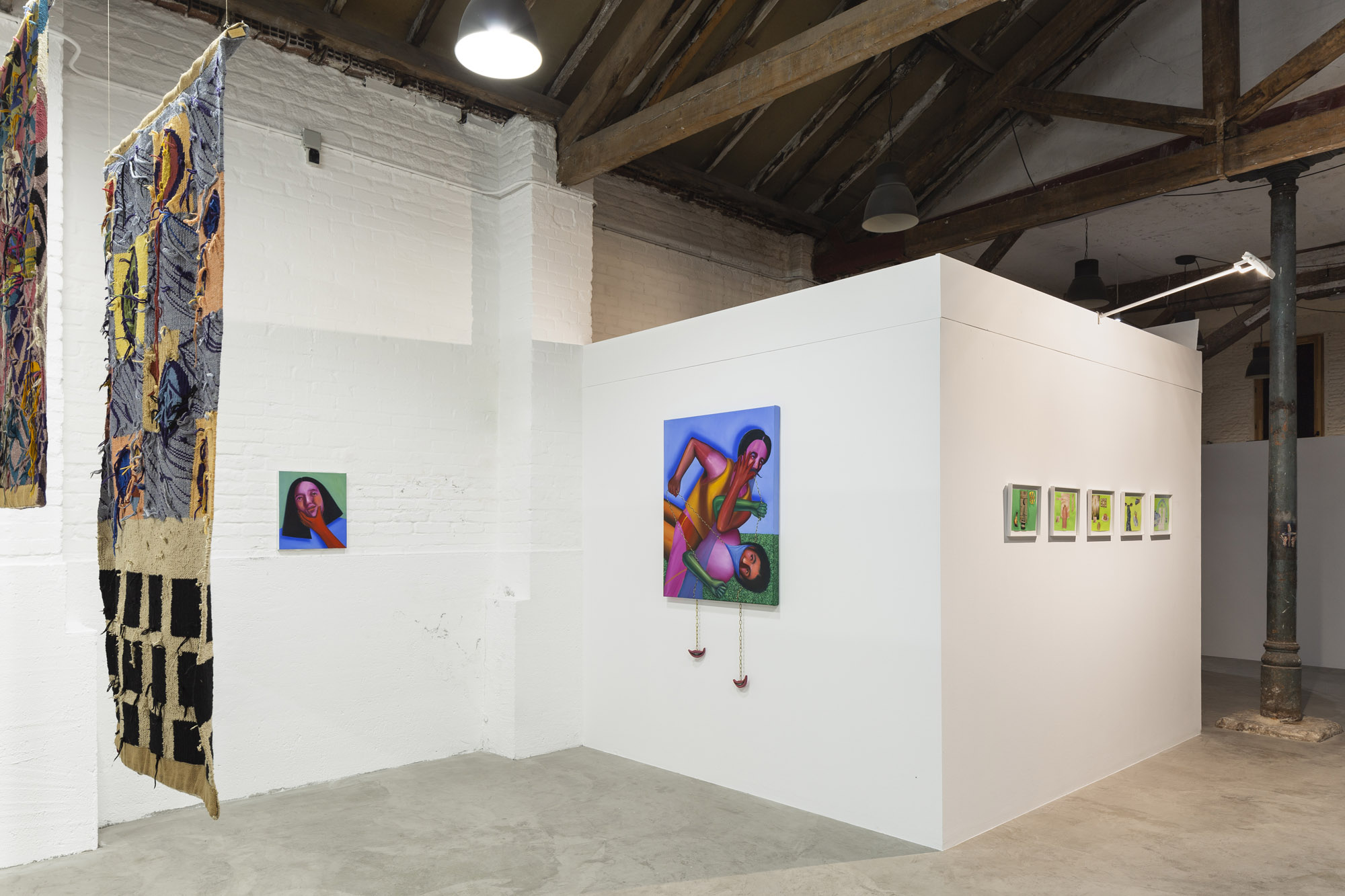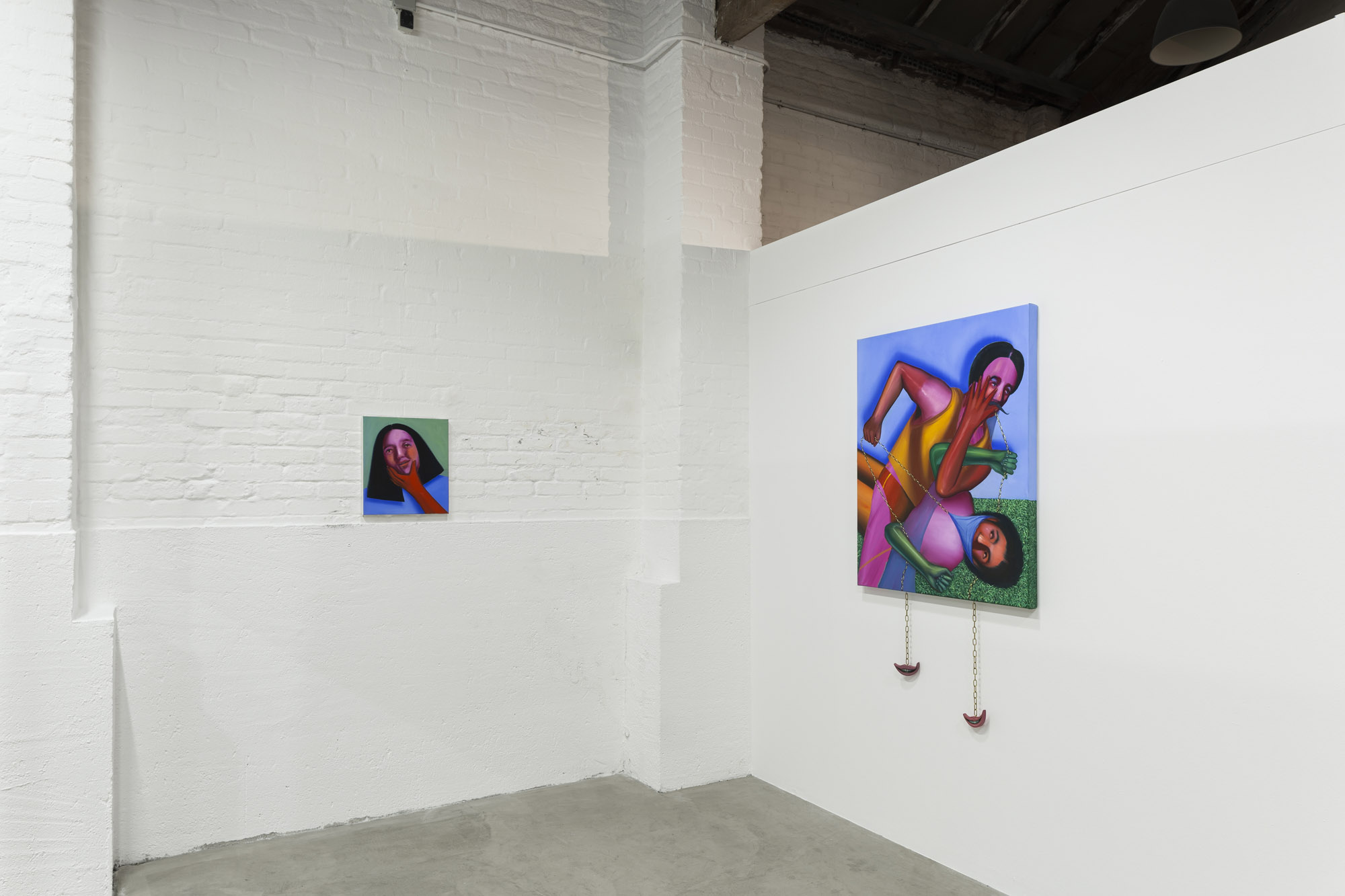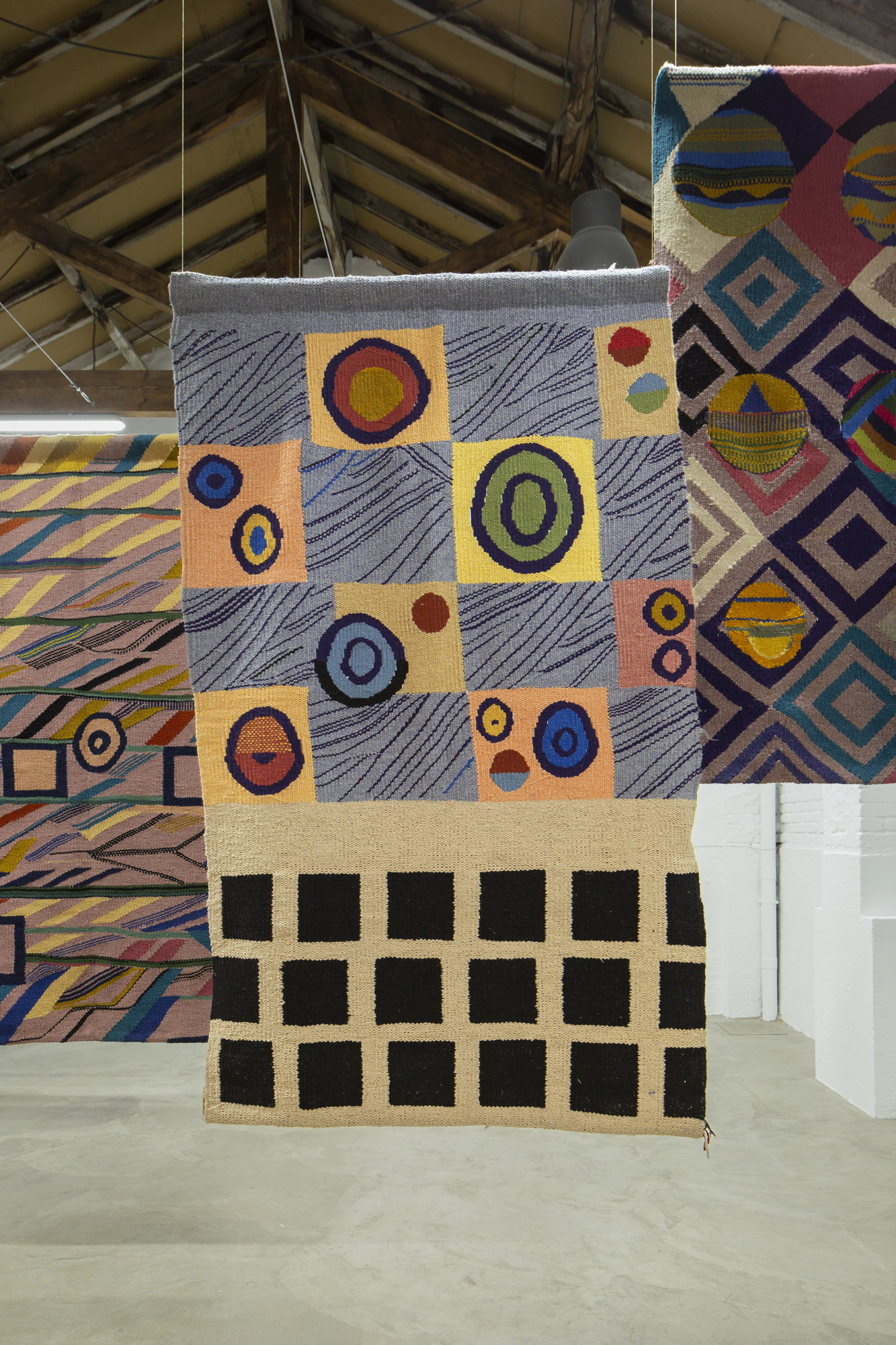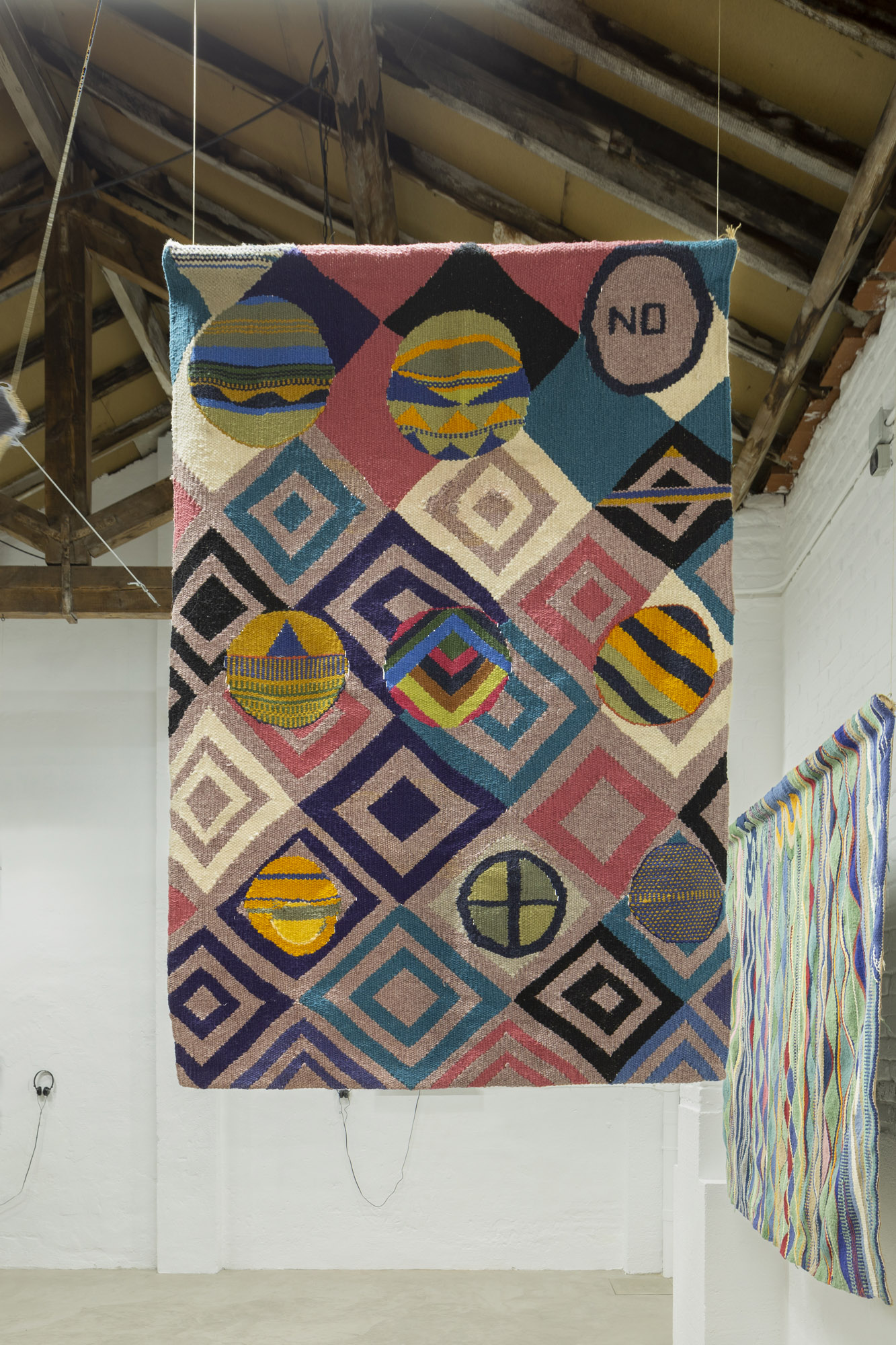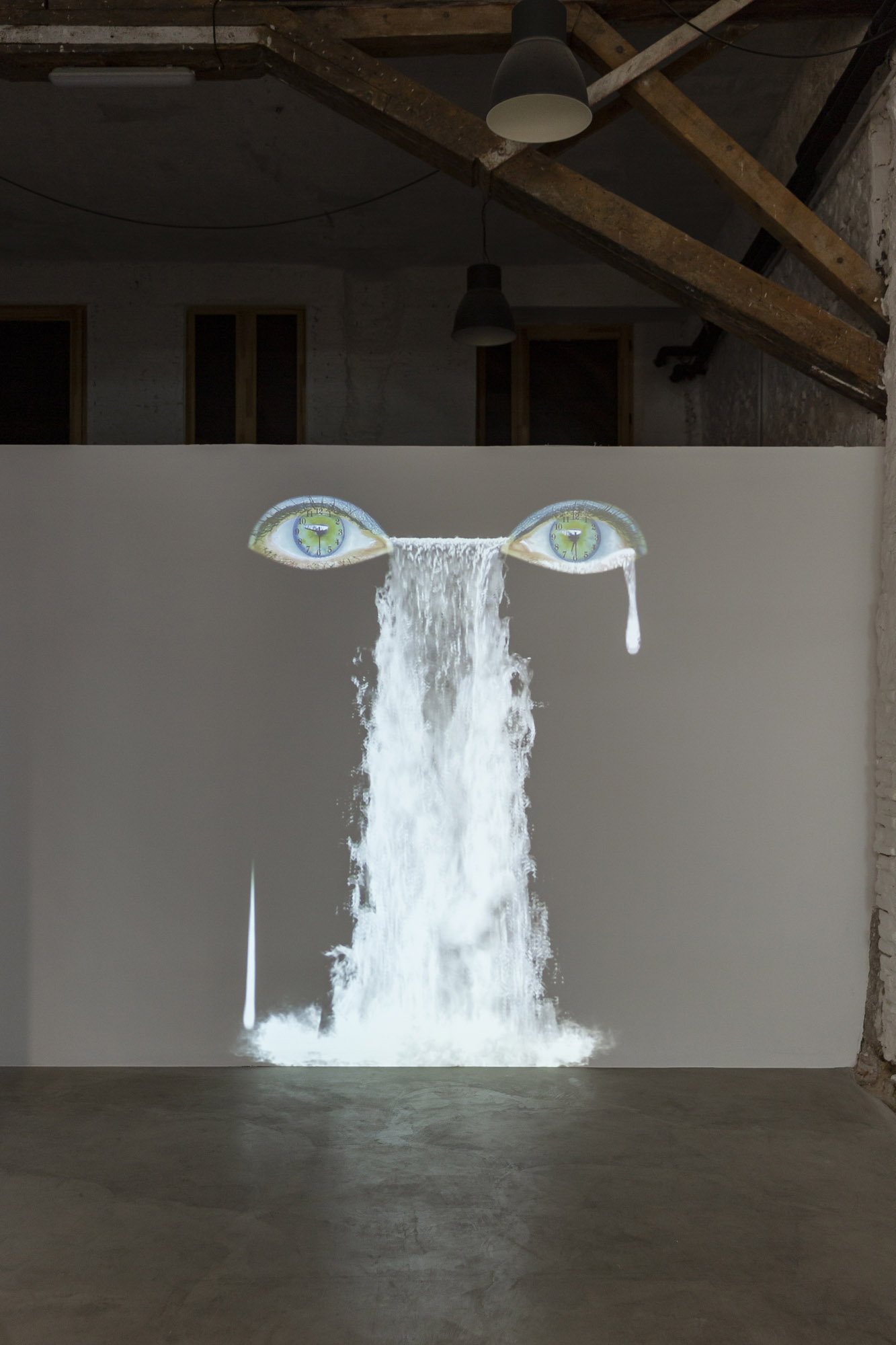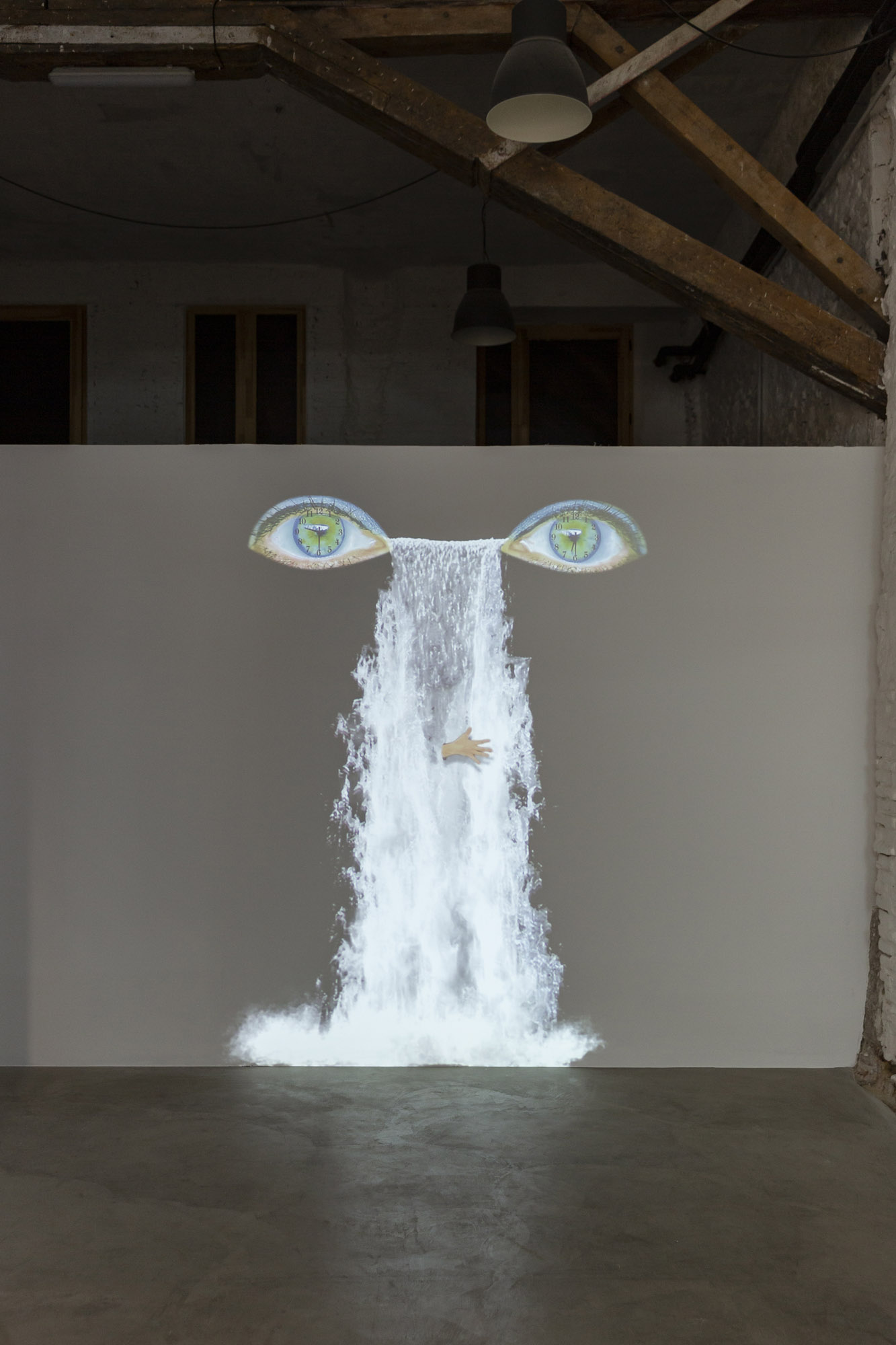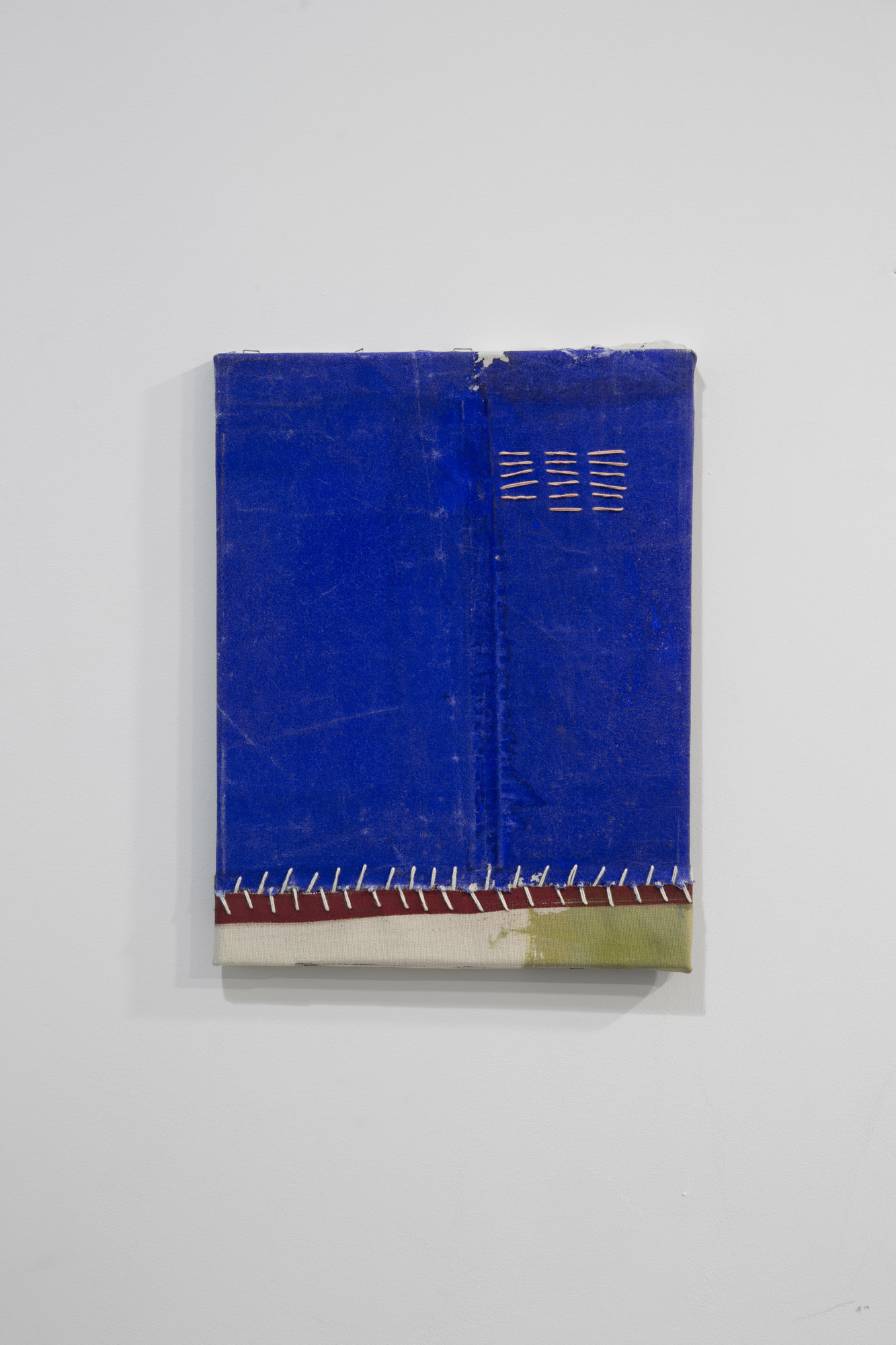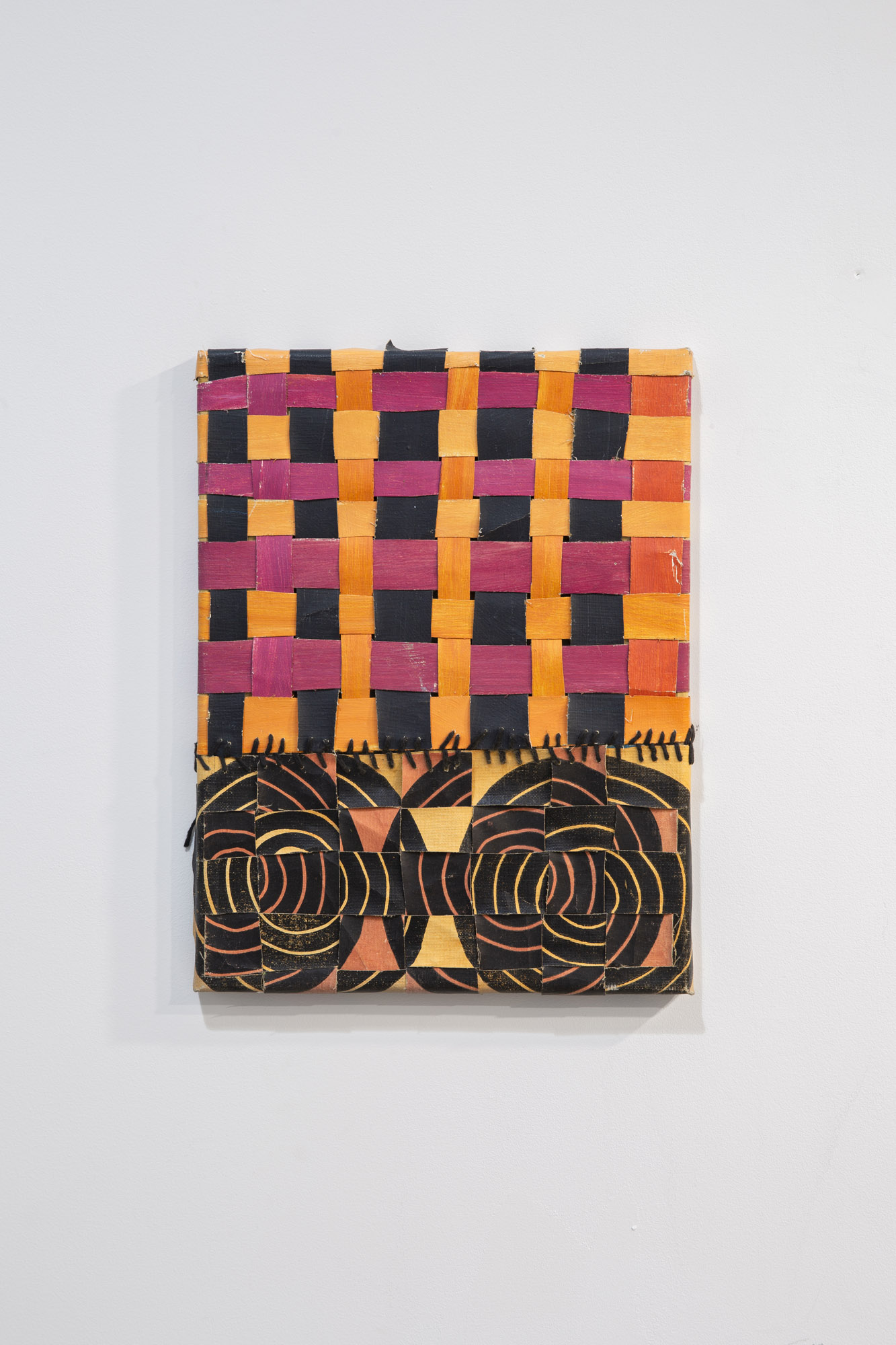Artists: Teresa Lanceta, Ana Prvacki, Shana Moulton, Ivana de Vivanco
Exhibition title: Happily ever after
Venue: The Ryder, Madrid, Spain
Date: April 28 – June 4, 2022
Photography: Pablo Gómez Ogando / All images copyright and courtesy of the artists and The Ryder, Madrid/London
After an economic crisis, climate change, a global pandemic and several wars, it is becoming clear that the happy ending we were taught to believe in will not be for us. However, this inherited idea of happiness remains the goal for the millennial generation and beyond, and achieving it still feels like our responsibility. It is there for us, we just need to fit ourselves into it through a series of requirements that seem quite reasonable at first: small changes in the way we eat, in the way we use our bodies, in the way we consume and communicate … building the yellow brick road to our happiness. Being dissident is not an option; one can disagree about many things but it’s almost impossible to escape from this life-path called happiness. Who wants to be sad?
Happily ever after is an exhibition that thinks with a group of artists about the conceptual scaffolding of a system that conceives happiness as a duty or imposition. With special attention to the body, this exhibition puts together the work of Teresa Lanceta, Ana Prvački, Shana Moulton and Ivana de Vivanco to weave a semantic universe that questions the very idea of happiness, considering all the ways of existing in the world and the multiple definitions that this concept could absorb.
In the practice of Teresa Lanceta, the act of weaving becomes a form of resistance. Undertaken mostly by women, weaving as performed by Lanceta contradicts the Western production system, embracing error as an element to be welcomed. When weaving, time is impregnated in the body of the weaver as well as in the tapestry created, resulting in a temporal elasticity that brings intimacy to the process. This way of understanding the relationship of body / time / object within a production system seems revolutionary at a moment when optimisation and exploitation are the rule. With her work, Lanceta gives a chance to a form of happiness that has more to do with doing than consuming.
Coinciding with Teresa Lanceta’s solo exhibition at MACBA (Barcelona Museum of Contemporary Art), the body of work selected for this group exhibition highlights some of the motifs presented in her tapestries, such as circles and free-standing forms that find connections through colour and geometry. Therefore, it focuses less on a specific period of her practice as an artist than on a way of understanding weaving as a constant restlessness that rebels against the protocol.
Ivana de Vivanco’s work invites us to delve into the medium of painting, the most hegemonic way of representation. Her paintings take inspiration from the baroque tradition to present disturbing scenes as uncomfortable in their content as appealing in their form. The main characters in her works seem to be trapped by the scenes they are part of, posing with anguish in their effort to perform happiness. Usually women, these figures pose with gestures that seem to be learned, attracting the viewer through the strangeness of their behaviour.
For this exhibition, artist Ana Prvački presents a series of video works originally commissioned for the 13th Gwanju Biennale. Playing ironically with the always-present aesthetics of advertising, the artist showcases a series of imaginary products that expose the stupidity of the artificial needs generated by our consumer culture. In Multimask, Energetic Tickle and The Splash Zone, the artist fantasises about objects that could fill in the gaps produced by the pandemic restrictions, imagining objects that could fulfil our affective needs at a moment when technology was the only possible way of building human bonds.
Similarly, Shana Moulton‘s practice addresses the universe of well-being and self-care often imposed on our bodies by the happiness regime: detox drinks, Pilates, healing stones, exercise routines, skincare… In this ritual to achieve wellness, Moulton’s work emphasises the frustration and anxiety derived from the emptiness of a system that objectifies the body as an object to be produced, maintained and improved.
In her installation, Waterfall of Grief, we find Cynthia, the artist’s long-time fictional character, a wellness-obsessed alter ego usually channelling contemporary anxieties. Her pupils are shrouded by two clock faces, her eyes welling with tears. Yet under this cascade of lamentation, we find Cynthia’s body dancing in jubilation. For the first time, she holds agency over her own body, being in contact with the physicality of it – even if it is found through her weeping. Nearby we are presented with a collage of advertisements created by the artist to concert poetic and spiritual compositions. Hanging from the ceiling, Moulton’s inflatable sculpture Untitled is composed of a grey inflatable doll and a skirt adorned with astrology and promotions. These symbols are taken from a bracelet found in the artist’s hometown in California and were used in her previous work Self-Transforming Machine Van, included in the landmark show Observatories in Wyoming, alongside pieces by Paul McCarthy, Liz Magic Laser and Glenn Kaino. The skirt that wears this inflatable doll could as well be seen as a parachute, helping this extraterrestrial into the gallery already laden with angst, apprehension and suspense.
Through this group of female artists, the exhibition takes the conventional definition of happiness and confronts it with itself, trying to grasp the history and meaning of this concept. If history has taught us that something is good when it makes us happy, maybe it’s time to see how this notion has been used to transform social convention into a good thing. What kinds of injustice or violence are obscured by this capitalist idea of happiness? Is happiness a collective feeling, or is it just a strategy to perpetuate someone´s privilege?
Happily ever after aims to think critically about our right to challenge the hegemonic idea of happiness. Feelings such as sadness or anger are understood in this exhibition from a different perspective, allowing the visitor to empathise with them with no prejudice. In an unsettled present, maybe it’s time to seek new ways of being with the world and existing in relation with others, imagining together a formless possibility of happiness that, perhaps, could one day be achieved.



